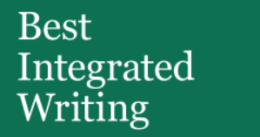 A journal that showcases select students’ academic papers from a wide range of disciplines is back after a six-year absence — and with a bright future.
A journal that showcases select students’ academic papers from a wide range of disciplines is back after a six-year absence — and with a bright future.
Best Integrated Writing: a Journal of Excellence in Integrated Writing at Wright State University features papers by students chosen from a variety of submissions from faculty members who worked with their students to develop the scholarly papers. The spring 2024 edition showcases the work of eight students.
“Best Integrated Writing is open to any class across campus that has a writing-intensive component,” said Kristie McKiernan, senior lecturer of English in Wright State’s School of Humanities and Cultural Studies and one of the journal’s two co-editors.
“The variety of disciplines demonstrates the importance of and the focus on excellence in writing throughout the Wright State community,” said the other co-editor, Tracy Smith, senior lecturer of English.
The last such journal was produced in 2018. Last spring, McKiernan and Smith were asked to spearhead the revival, which involved soliciting, editing and choosing submissions.
Early in the Fall Semester, the co-editors issued a call for submissions through newsletters and word of mouth. The submissions came from faculty who worked with their students on further developing the papers.
“The journal’s process allows for more collaboration between faculty and students, building stronger relationships,” McKiernan said.
Then in early spring came an unexpected result. “We were surprised by the response,” McKiernan said.
In a field where they thought the submissions would be in the single digits, they received more than 20 papers. “We didn’t think we would get that many,” McKiernan said.
“I believe the Wright State academic community is excited about the return of the journal and the opportunity it gives their students,” Smith said, “hence the large number of submissions.”
McKiernan and Smith got to work, editing and planning the final version.
“We chose eight, the most stellar and a sampling, no two of which are on the same subject,” McKiernan said.
A couple of examples: “Reintegrating Humanity and Nature in Education and Workplaces” by Kristin Johnson, a 2023 Wright State graduate with a bachelor’s degree in psychology and a minor in computer science, and “Characterizing the Polyamorous Experience Through Research” by Kacey O’Harra, who recently graduated with a bachelor’s degree in psychology with a concentration in behavioral neuroscience.
The new issue of Best Integrated Writing is available on CORE Scholar at corescholar.libraries.wright.edu/biw/vol6/iss1.
Because of the unexpected number of quality submissions, McKiernan and Smith received approval to publish not one but two journals each academic year.
McKiernan and Smith have the submissions left over from spring and plan to call for new submissions in early fall. A new journal will be produced in early November.
McKiernan said they hope the next round of submissions includes posters or multimedia, neither of which were in the mix this time.
“We’re also open to seeing digital projects,” she said. “It could be in arts, education or even sciences, where students are often assigned poster presentations. With the journal being digital, we perceive that there could be a link to see not only an essay but also a video or presentation.”
The co-editors say the revived journal benefits students and Wright State.
“The university talks about the importance of student relationship, retention and recruitment,” McKiernan said.
Positive academic news that showcases these relationships and the positivity of students working with faculty shows “we have high standards, and the students are meeting them,” she said.
“The journal gives students an opportunity to showcase their work,” Smith added, “and will hopefully inspire them to pursue graduate studies and continued academic publishing.”
Students whose work is published in the journal are also building their academic credentials, which helps them when applying to graduate school or interviewing for a job.
“We both thank the faculty and students behind the many exemplary pieces of writing that were submitted,” Smith said. “We also want to encourage additional faculty members to submit the excellent writing of their students as we move toward biannual editions.”

 Milling around
Milling around  Wright State recognizes Nursing Professor Kim Ringo for advancing international student success
Wright State recognizes Nursing Professor Kim Ringo for advancing international student success  Wright State honors graduating students for distinguished doctoral dissertations
Wright State honors graduating students for distinguished doctoral dissertations  Top 10 Newsroom videos of 2025
Top 10 Newsroom videos of 2025  Museum-quality replica of historic Hawthorn Hill donated to Wright State
Museum-quality replica of historic Hawthorn Hill donated to Wright State 